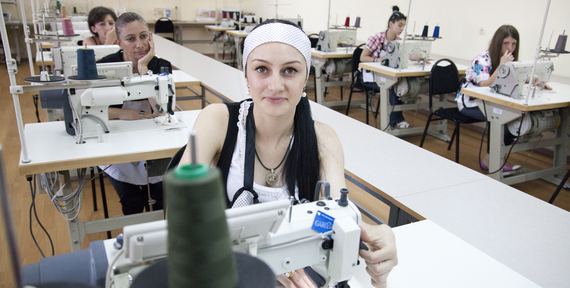The headlines emerging from Davos this year show that concerns about inequalities are continuing to grow. According to Oxfam's latest report, the billionaires that are as rich as half of humanity can now fit on a bus. In 2010 they would have required a Boeing.
But the picture is in many ways much more complex. Take the region I cover: Eastern Europe, Turkey, and Central Asia. Over the past twelve years, the number of people earning 10 to 50 dollars per day has tripled from 33 to 90 million. That's not just an increase in absolute terms, but also a proportional rise. In countries where the data stretch back to before 1990, they show that socialist-era middle classes (or their children and grandchildren) have managed to reconstitute themselves.
But as is the case with so much that has gone right in the past decade, these accomplishments are fragiIe. Growth in GDP has not been matched by the creation of decent jobs--growing numbers of workers are without social protection.
Moreover, the drivers of growth in the region are coming under increasing pressures. Slow economic growth in the EU is no longer offset by a boom in Russia fueled by high oil process. Instead, the region is the scene of renewed geopolitical tension and the remittances from Russia that have been a lifeline for many vulnerable households have dropped dramatically since 2014.
Stable jobs are also a serious concern. In the Western Balkans, for instance, up to 90 percent of unemployed women and men have been in that situation for at least a year. Much more needs to be done to modernize economies, build skills and nurture entrepreneurship. Above all, we need to invest in women so that they too can increase their participation in the labor force. But there are signs that labor market policies are improving. Bosnia and Herzegovina is becoming an outsourcing destination for Western European car companies. In the FYR Macedonia, thousands of jobs have been created thanks to a state-sponsored entrepreneurship programme.
Over the long-term, keeping inequalities down will also depend on the ability of countries to protect and cultivate their natural capital. The region is home to Chernobyl and the Aral Sea tragedy -- among the world's largest man-made ecological disasters -- and is known for its dependence on non-renewable fossil fuels. Greening economies isn't just a fancy aspiration. It is an urgent necessity.
Keeping inequalities down will require measures to protect the region's booming population of HIV-positive men and women; to reduce corruption and ensure everyone can access legal services; and to prevent conflicts from derailing hard-won development gains.
The commitment to 'leave no one behind' has been at the center of all the discussions on the newly-inaugurated Sustainable Development Goals (SDGs). So is the idea that "no goal should be met unless it is met for everyone". If we make them a reality, Eastern Europe and Central Asia will be in a much better position to become peaceful and prosperous.

